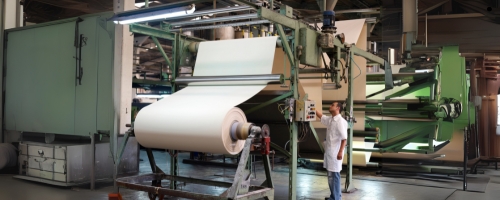Fire Suppression Systems for Textile & Garment Factories
The textile and garment industry operates in an environment rich with fire hazards—flammable fibers, chemicals, heat-generating equipment, and dense production zones. These conditions make fire not just a risk, but a potentially devastating threat to life, property, and business continuity.
At SynergyFire, we understand the unique challenges of fire safety in textile manufacturing. As a specialist provider and installer of fire suppression systems, we deliver customized, standards-compliant solutions that safeguard your factory, workers, and inventory—while ensuring minimal disruption to your operations.
Common Fire Risks in Textile & Garment Facilities
A fire in a cement plant can cause:
Combustible Fibers - Cotton, polyester, wool, and other materials catch fire easily.
Dust & Lint Accumulation - High concentrations of fiber particles in the air increase fire risk.
Chemical & Dye Storage - Many textile processes involve flammable substances.
Overloaded Circuits & Heated Machinery - Common sources of ignition due to wear and electrical faults.
Fact: Textile factories account for a significant share of industrial fire incidents in India, often due to outdated or absent fire protection systems.
Why Fire Suppression Is Essential in Textile Units?
Fire spreads rapidly in environments filled with flammable fabric and lint.
High human density and expensive machinery demand quick response.
Required for regulatory compliance under NFPA, BIS, and local fire safety norms.
Demonstrates safety commitment to workers, clients, and insurers.
Types of Fire Suppression Systems We Install
| Suppression System | Application Area | Key Advantage |
| Water Mist Systems | Fabric processing zones | Cools flames with minimal water damage |
| Clean Agent (FM-200, Novec 1230) | Electrical control rooms & panels | Leaves no residue; safe for electronics |
| CO₂ Suppression | Server rooms, closed machinery zones | Ideal for unoccupied enclosed spaces |
| Foam-Based Systems | Chemical and solvent storage | Fast smothering action for flammable liquids |
| Automatic Sprinkler Systems | General workspaces and storage | Broad coverage and cost-efficient |
Key Benefits for Textile & Garment Manufacturers
Round-the-clock, automated fire protection
Reduced insurance premiums through certified safety systems
Preserved inventory, machinery, and production uptime
Enhanced workplace safety and morale
Our Turnkey Implementation Process
On-Site Risk Assessment
Our experts visit and analyze fire-prone zones.
Customized System Design
CAD layouts with fire load calculations.
Installation & Testing
Done by certified SynergyFire technicians.
Annual Maintenance Contracts (AMC)
Inspections, refills, and training.
Why Textile Brands Trust Synergy Fire?
10+ years in fire protection for the textile and apparel industry
Deep understanding of fabric-specific fire behavior
End-to-end service—from consultation to long-term support
Trusted by leading textile exporters and manufacturers across India
Customized fire safety for dyeing units, mills & warehouses
Compliance-ready systems with BIS, NFPA, and local fire norms

Frequently Asked Questions (FAQs)
The ideal system depends on the specific area:
✔ Water mist systems are great for fabric handling zones.
✔ Clean agent systems (FM-200, Novec 1230) are perfect for electrical rooms.
✔ Foam or CO₂ systems are best for chemical or solvent storage.
SynergyFire helps you choose and install the right solution based on your plant layout.
Not if designed correctly. We use clean agents and water mist systems that minimize or eliminate damage to materials and sensitive equipment. Our solutions are engineered to match your operation’s risk profile and recovery needs.
Yes. All systems installed by SynergyFire are compliant with NFPA, IS 15105, NBC, and local fire department regulations. We also help with inspection documentation and audits.
No. Fire detection (smoke or heat sensors) alerts you to a fire, while fire suppression systems actively extinguish or contain it automatically. At SynergyFire, we integrate both for maximum protection.